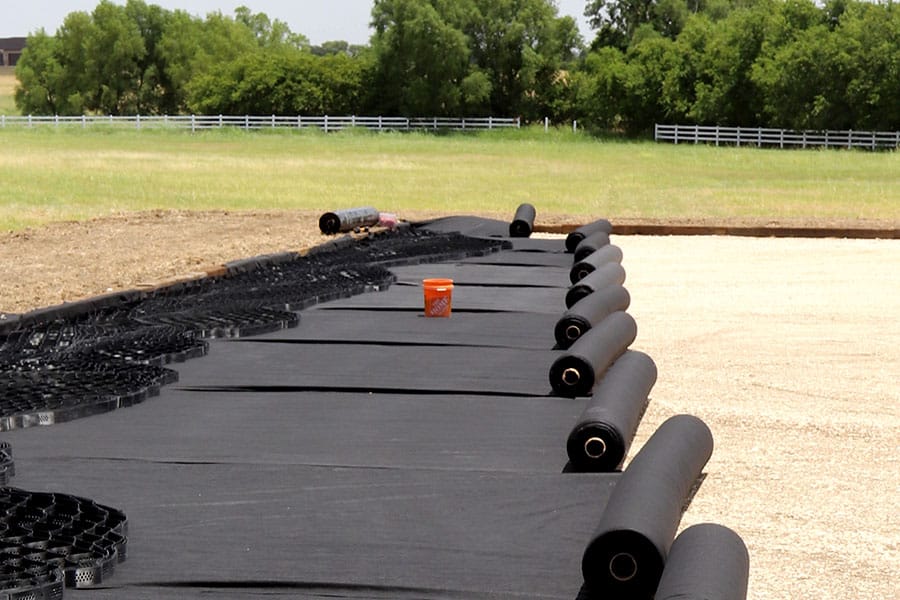When you’re working on a new construction or landscaping project, picking the right geotextile fabric can have a huge impact on its long-term stability. Both woven vs non-woven geotextile fabrics have their own unique set of benefits and limitations. That’s why it’s essential that you choose the fabric that aligns with your ultimate goals.
Here’s what you need to know about woven vs non-woven geotextile fabric so that you can be prepared for your next undertaking.
What Is Woven Geotextile Fabric?
Woven geotextiles are manufactured using individual threads of fabric that have been tightly wound together, creating an ultra-durable finished project. This makes them a great choice for separation and reinforcement projects that require heavy-duty tensile strength.
In most cases, woven geotextile fabric is made using either fibrillated yarn, slit films, or other construction-grade fibers. This extreme durability prevents erosion and punctures to the fabric surface but also limits filtration. That’s why woven geotextile is not recommended for projects that require permeability, such as drainage projects.
Recommended applications for woven geotextile fabric…
- Beneath driveways and parking areas
- Road constructions, both temporary and long-term
- High-load capacity areas
What Is Non-Woven Geotextile Fabric?
Alternatively, non-woven geotextile fabric is made using a combination of short and long threads that are forged together through needle punching. This practice leaves room for water and other natural elements to be filtered out through the fabric, which is why non-woven geotextile fabric is the top choice for construction projects that require filtration and drainage systems.
Just like woven geotextile fabric, non-woven fabric can also support a heavy load capacity. Sometimes, additional heat will be applied to the fabric to increase its overall strength. Non-woven geotextile fabric is often made using synthetic fibers like polyester or polypropylene.
Recommended applications for non-woven geotextile fabric…
- Covering or wrapping french drains
- Separation filtration for construction and landscaping projects
- Gravel driveways
- Road construction in wet climates
Choosing Between Woven vs Non-Woven Geotextile Fabric
As you can see, these two types of geotextiles are both great options for a variety of construction projects. But before you decide which fabric is right for you, take the time to evaluate the needs of your project and determine which features will benefit you the most.
Woven Geotextile Fabric:
- Ideal for heavy load capacity
- Puncture and erosion-resistant
- Durable for long-term reinforcement
- Not considered permeable for filtration
Non-Woven Geotextile Fabric:
- High flow-through rate for filtration and drainage
- Can have increased strength for heavy loads
- Helps prevent erosion and slopping
- May not be puncture-proof for long-term use
Where To Find The Best Geotextile Fabrics?
No matter what type of project you’re working on, Performance Footing is here to help.
As a leading supplier of both woven and non-woven geotextile fabrics, our team is ready to assist you with picking the right material for construction projects of every scale.
Contact us to learn more about our professional-grade geotextile fabrics today.
